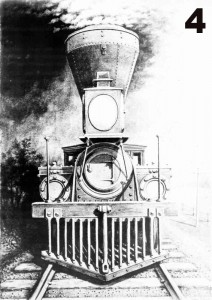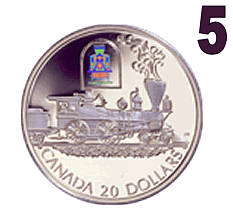Historic Note: The Beautiful Josephine by John Loye
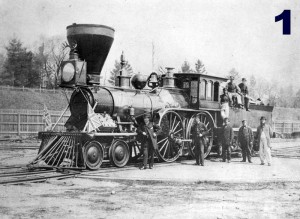
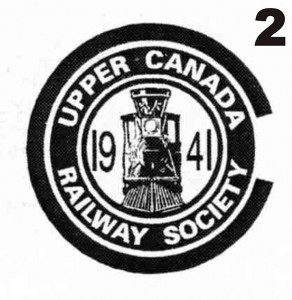
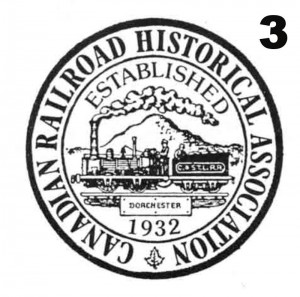
Click on each image for a closer look!
.
This article appeared in the Upper Canada Railway Society newsletter Number 6 in March 1942. John Loye was born in Montreal in 1880 and was one of the founding members and the first president of the Canadian Railroad Historical Association in 1932. He was a devoted amateur historian and his florid writing style is more reminiscent of the early 18th than the mid-20th century. Loye was a technical designer and created the logo still used by the CRHA. He died in Montreal in 1962.
The Beautiful Josephine
by John Loye
.
This famous locomotive with the intriguing name must ever live in the railroad traditions of Toronto. As among living beings, so also among locomotives have been found those which attain the fame and renown above the ordinary plane of their fellows.
.
When we speak of the Josephine it brings to our minds the indigenous scenes of Toronto of another and picturesque day. We can dwell with others in the atmosphere of the ‘fifties again, when the busy new railway station at the foot of Bay Street resounded with the traffic of the trains, the clangour of the engine bells, and breathed the wafted odor of burning tamarac blowing from proud and prominent balloon-stacks. When the buff and brown facade of the Rossin House (now the Prince George Hotel) rose rich and new at King and York Streets, and an aspect of new-found glory opened to the Queen City of the west.
.
The Josephine in every way deserved her fame. She was the highest expression of locomotive design of the time of her production, 1853. We have often wondered how it came that this particular engine was so superb and superior. Was it that special specifications governed her design and dimensions? It was this super-excellence in size and construction, and beauty and symmetry of proportions, that marked the Josephine is an engine the lone of her kind.
.
Josephine was a big engine for her time, and as big as they came up until the ‘seventies. She was as smart in performance as in appearance, and, in truth, was far too good for the rail she had to run on. No one ever knew how fast this engine could go. They could never let her out to the limit of her speed on the tracks of the Ontario, Simcoe on Huron, or the Northern of a later day.
.
This big and beautiful “narrow-back” with her tilted cylinders and six foot wheels, was built by John Brandt of Paterson, New Jersey. Why the designer and builder of such a magnificent engine should fail to make good in the field of his profession excites wonderment. Was it that he was ahead of the times?
.
There were several locomotive works flourishing in Paterson at that time and competition was keen. It has been said that Brandt put everything he had into the Josephine in order to win additional orders. Maybe so, for he did get subsequent orders from the OS&H; but whether or not; he did himself proud when he produced the beautiful Josephine.
.
The engine was remarkable always because of the ornamental cab it bore, with three gothic windows and each side, the only example of its kind to be seen around Toronto. It has been said that it was made entirely of mahogany. Of this we are uncertain, but it was elaborately molded and mitered, and in true architectural design.
.
When first delivered to the OS&H in 1853, the engine must have been grand in appearance. The boiler lagging was of the silvery hue, and the two steam-domes were like burnished gold. There was a planitude of bright silver and brass trimmings. These gave a glittering appearance in the sunshine. Even up to the day the Josephine was broken up, about 1880, it retained that air of superb distinction that made it an object to admire and forever remember — the beautiful Josephine.
.
(Mr. John Loye is the secretary of the Canadian Railroad Historical Association and was for eight years president. He, one of Canada’s leading figures in the field of railway history, wrote this comment on request in order that our members might know more of the engine that is incorporated into the design of our insignia.)
.
IMAGES
.
#1 – Northern No. 3, decorated with Union Jacks and deer antlers, poses on the turntable south of Front Street circa 1860. In an era when railway engines received individual names, this was the ‘Josephine’, probably named for or by its longtime engineer Josiah Huckett, the dapper looking gentleman seen leaning on his engine. With its enormous 72″ driving wheels, this was the fastest engine in the NRC roster.
.
#2 – The front of the locomotive was incorporated into the logo of the Upper Canada Railway Society.
.
#3 – Loye also designed the CRHA logo, which incorporated the Dorchester, the first steam locomotive to operate in Canada.
.
#4 – In 1932, Loye drew this sketch of the Toronto, the first steam locomotive built in Canada.
.
#5 – In 2000, the Royal Canadian Mint incorporated Loye’s sketch as a holographic image in its $20 coin commemorating the Toronto.
.
Posting by Derek Boles, TRHA Historian
.
